
Membership Benefits
for Local Societies
Grants
Funding projects is important to the OHA and we offer several grants to societies each year. Check out our Awards and Grants booklet in the Resources section for more information.
Insurance
The OHA provides societies with inexpensive liability insurance to protect them against any lawsuit that might be brought against a society as a result of negligence by one of its members.
Newsletter
Four times a year, the OHA publishes and delivers a newsletter to keep societies up to date with the affairs of the Association. All societies are invited to submit articles that are of provincial interest.
Support for New Officers
Newly elected officers of local societies get all the help necessary to be successful. There are comprehensive resources available online and from our network of members who are eager to help. Included are guides and manuals that explain the relationship and obligations between a society, the OHA, and the Ontario Ministry of Agriculture, Food and Rural Affairs (OMAFRA).
for Individual Members
Awards
OHA awards recognize members of horticultural societies who have done admirable or outstanding work. Find out more about Awards and Grants.
Convention
At the OHA Annual Convention, members of horticultural societies get together for speakers, educational seminars; competitions with other societies in horticulture and design, photography, art and publications; commercial exhibits; youth competitions; and a chance to share new ideas, renew old friendships and make new ones.
Discounts
The OHA is offered discounts for our members from time to time by organizations and retail establishments in support of their products and services. Also check individual societies and districts in your area for a more localized list. Currently, we have the following discounts:
- Ontario Gardener Magazine offers us a subscription for $20 a year (regular price is 29.95)
- 10% discount on all purchases at H. Perron (Dominion Seed House)
- Ontario Horticultural Association members get preferred rates with Co-operators Group Home and Auto insurance program! For more information, please go to the Home and Auto Insurance page.
Judging Schools
Are you interested in learning how to judge competitions? OHA offers training courses for prospective judges for horticultural and agricultural society shows. We certify judges and publish a guide for judges and exhibitors of specimen and decorative classes entitled Ontario Judging and Exhibiting Standards – for Horticultural and Floral Design (“OJES” for short). See our Garden Shop to purchase this publication. Also see our Judges List to find an OHA certified or otherwise certified judge for your show.
Networking
The OHA offers individual members the opportunity to make new friends with people having similar interests – right across the province. Find your society today. We also publish a list of interesting organizational links and online resources on a variety of topics.
Youth Activities
OHA encourages young people to participate in their community through horticulture. A leadership manual, newsletter, and special competitions are available to youth members. Many societies offer programs for youth and many more can be implemented – we show you how.
Community Initiatives
Get inspired by the many ways you can be involved in your community:
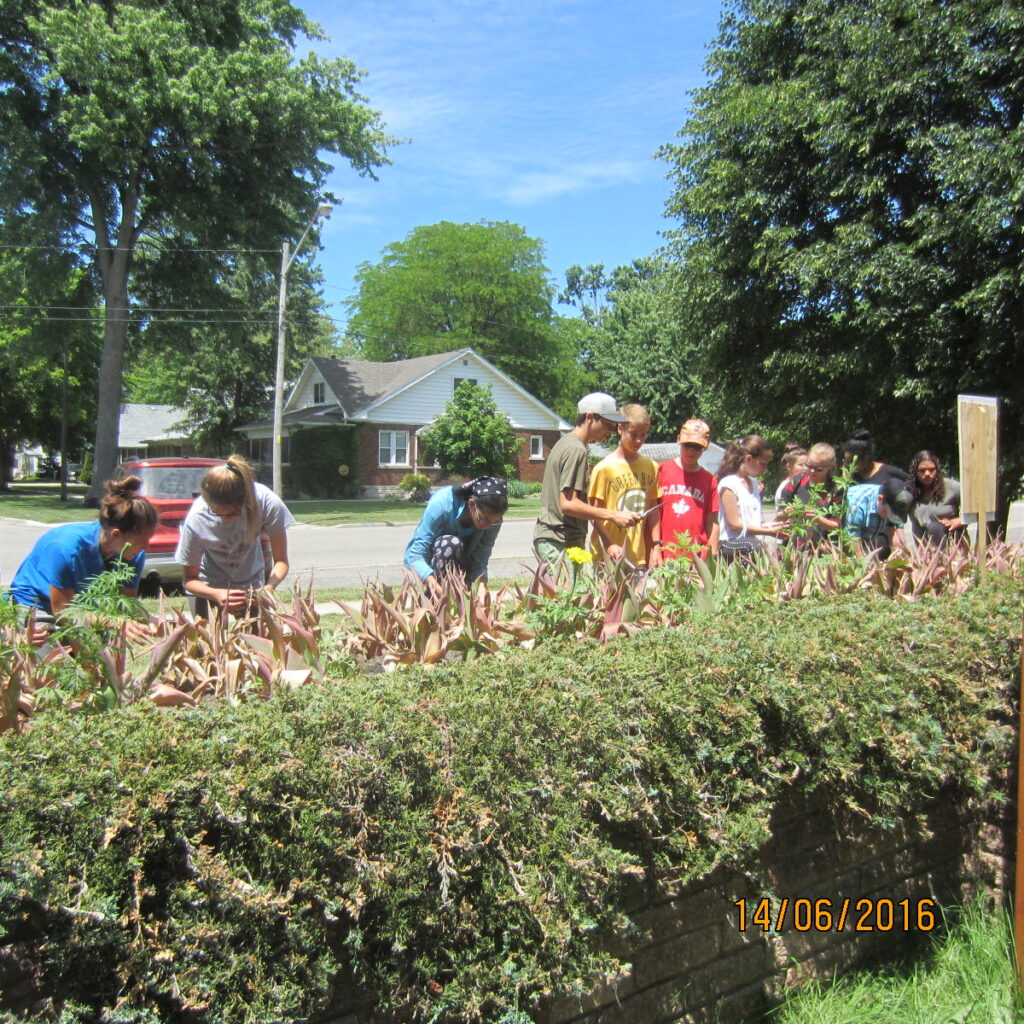
Civic Planting and Beautification
Involve your society members in the beautification of their communities by planting and maintaining civic garden beds and planters. See also our Special Projects and Tree Plantings sections below for more information.
Organize a Litter Cleanup or Plant Rescue
LITTER CLEANUPS
You can make a difference in the health and cleanliness of your natural environment and foster civic pride by volunteering to organize or participate in litter cleanups being held at schools, churches, local parks, and highways.
How to Organize a Litter Cleanup
- Choose a designated area and visit it to identify any potential hazards or challenges. Try to conduct your event in spring when the trash is quite visible.
- Obtain permission from the landowner or municipality. Be prepared for your group to provide a certificate of insurance for liability purposes.
- Create a plan for separating and transporting the collected litter (garbage, recycled materials, household hazardous waste, tires, scrap metals, reuse items and so on). Be sure to arrange for trucks and trailers to be on hand.
- Gather supplies such as pails with handles, garbage bags, gloves, safety vests, water, first aid kit, and cell phone for emergencies.
- Alert interested members of date, time and location for litter cleanup. Encourage them to wear light-coloured clothing that covers arms and legs, suitable footwear and a hat. A safety vest is to be worn at all times. Provide training and emergency procedures in advance to ensure the safety of each volunteer.
- Keep bug repellent and sunscreen and plenty of water on hand.
- Ensure adequate supervision.
Get Involved…
- Contact the Ministry of Transportation of Ontario (MTO) about their ADOPT-A-HIGHWAY PROGRAM for all the necessary information. They can be reached Toll-free at 1-800-268-4686.
- Check in with your local government and environmental organizations to inquire about local spring cleanups they organize to find out how you can participate.
PLANT RESCUES
Occasionally societies are notified of an imminent plan to demolish or develop an existing site that contains valuable native plants. Organizing a successful plant rescue requires a well-planned and coordinated operation. Consider these important points:
- Obtain written permission from the developer of the site or the municipality before taking any action. You may have to provide a certificate of insurance.
- Contact interested members via an electronic distribution list or telephone tree so they can be ready at a moment’s notice as well as knowledgeable groups such as Master Gardeners and local naturalists.
- Preview the designated area and decide on which plants will be dug up and replanted elsewhere.
- Wear long sleeves and pants, sturdy footwear, a hat and protective gloves. Bring bug repellent and sunscreen as well.
- Gather up necessary equipment. Bring shovels, transplanting spades and garden trowels to lift plants and sturdy pails, baskets, and trugs to transport them home safely.
- Follow acceptable guidelines and protocols to prevent the spread of invasive plants. Check out the Ontario Invasive Plant Council for reliable information.
Get Involved…
- North American Native Plant Society offers lots of advice on plant rescues
- Wild Ones-Native Plants, Natural Landscaping offers guides related to conducting a native plant rescue
- Check out the following:
- Wild Ones Plant Rescue Guidelines—Everything You Should Know
- Plant Rescue Do’s and Don’ts and
- How to Conduct a Plant Rescue-Brief Overview

Garden Tours
Garden Tour Guidelines
- These are hands-off events—no weeding (however well-intentioned), no deadheading or pruning of any kind, no eating of produce on display, and certainly no rearranging of the garden labels. Leaving a trail of damage is disrespectful to your host and maddening to tour organizers who have worked long and hard on your behalf.
- Do not put the hard sell on your garden host to give up cuttings, seedlings or even seeds. Do your homework and seek out a nursery when you can purchase such items. The price of a tour ticket does not entitle you to free plants.
- Come dressed in comfortable clothes and suitable footwear and remember to wear a hat and sunscreen. Carry a small notebook and pen to record snippets of info you don’t want to forget.
- Ask permission before taking any pictures and be sure to stay on the pathways. Don’t intrude in areas that have been roped off.
- Try to compliment the garden host on an aspect of his/her garden you are impressed with and withhold any disparaging remarks or comparisons. Enjoy each garden for its own sake and be courteous.
Get Involved…
- Local horticultural societies and other community organizations organize garden tours as fundraisers and educational opportunities. While some offer detailed maps and instructions for gardeners to travel on foot or by car at their own pace, bus tours offer the opportunities for participants to sit back and take everything in without worrying about getting lost or finding an available parking spot.
WE Can Help!
Check out Garden Tours New England’s article “Organizing a Garden Tour” found here. Also, download our checklist for planning a garden tour (found on our resources page under manuals and guides).

Horticultural Therapy
The Canadian Horticultural Therapy Association (CHTA) is a non-profit organization that promotes the use of horticultural therapy and therapeutic horticulture for diverse populations and in a wide variety of settings.
Benefits of Enabling Gardens
Enabling Gardens offer the following benefits
- They are designed to be accessible
- They include plants that stimulate the senses
- They provide quiet, restful areas
- They provide an opportunity for one to experience gardening regardless of age or physical, cognitive or emotional limitations
Gardening with Special Limitations
The Chicago Botanic Garden offers some wonderful tips for gardening with physical limitations.
- Be aware of what you can and cannot do in the garden and ask for help when needed.
- Use ergonomically designed and well-maintained tools, garden kneelers and caddies for greater ease.
- Be sure to stretch and warm up your body before you begin.
- Consider raised beds and container gardens to minimize bending and digging.
- Install drip irrigation and soaker hoses to timers to handle watering chores efficiently.
Get Involved…
- Check out Guelph Enabling Garden Archives (Eat/Breathe/Garden) for a wealth of seasonal horticultural activities
- Enabled Garden Design – Learn About Gardening with Disabilities
- Gardens for Senior Citizens: Creating an Easy-Care Senior Garden
- Gardening for Life—A Guide to Garden Adaptations for Gardeners of All Ages and Abilities
- For a selection of ergonomic tools and adaptive equipment, check out Lee Valley *Link to Lee Valley in Resources
- Wheelchair Accessible Gardening
- A Guide for Making Community Gardens Accessible for all Members
- For information on creating a sensory garden, refer to Gardening for the Senses: The Sensual Garden
- Community garden organizers should download this invaluable resource: A Guide for Making Community Gardens Accessible for all Members
WE Can Help!
Available OHA Grant: Special Project Grant ($500 value). Check out our Awards and Grants.
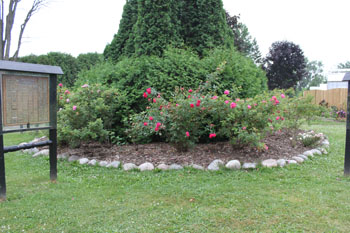
Memorial Gardens
Memorial gardens have been designed and planted in honour of individuals who have had a significant impact in the lives of those they have touched. They can help those grieving to heal, accept their loss, and move forward with their lives.
Design a Garden of Memories
- Choose a restful site that has 4-6 hours of sunlight, so you can choose from a wide variety of plants.
- Incorporate favourite perennials, wildflowers or roses for colour and wildlife appeal.
- Add a focal point such as a small tree, water feature, piece of statuary or an engraved plaque mounted on a large rock.
- Invest in a bench or two for seating.
- Be sure to schedule regular maintenance to keep the site neat and tidy.
Get Involved…
- Plant a commemorative tree to recognize the memory of a Society or District member or to mark a significant occasion in your community.
- Consider offering inscribed paving stones that can be incorporated into the garden to help raise funds for your project.
WE Can Help!
Available OHA Grants: Special Project Grant ($500 value) and Tree Request ($200 value) Check out our Awards and Grants.
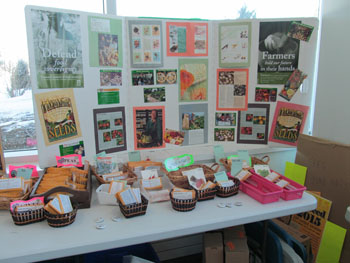
Seed Sharing
The OHA encourages gardeners to learn how to save seeds to ensure local food security by protecting the unique varieties that are important to their communities. The trading of seeds via seed exchanges and Seedy Saturday/Seedy annual events helps to build a local community seed bank that can be called on in the event of natural disasters and other calamities.
Seedy Saturday and Sundays
Thanks to Sharon Rempel who organized the first Seedy Saturday in Vancouver in 1989, these “fun, fast and furious” gatherings will soon be celebrating 30 years of existence. With the support of Seeds of Diversity, Canada now hosts more than 140+ Seedy Saturdays/Sundays across our country.
Seeds of Diversity (known as SoDC) is Canada’s national organization that provides support, education, and resources to encourage gardeners and farmers to propagate, grow, harvest, and save open-pollinated and heirloom seeds of plant varieties that are not widely available from seed companies.
These events bring together gardeners, farmers, seed savers, and citizens passionate about gardening, food security, and the environment. Imagine the addition of vendors, educational displays, and children’s activities and then toss in free handouts, tasty food, and jam-packed speaker presentations and workshops and you’ll understand why Seedy Saturdays are so intoxicating.
Top Ten Tips for Organizing a Successful Seedy Event
- Gather interested individuals, community organizations, and even enthusiastic businesses to form a planning committee. This is a great opportunity to network, get people involved, and spread the word.
- Choose a venue that is easy to find, affordable, and accessible and select a date. Ensure there is plenty of parking space, access to public transit, and adequate tables and chairs available so you don’t need to rent them. Create a site map to ensure that the entrance is easily accessible, that exits are not blocked by tables or equipment, and that there is sufficient room for good traffic flow.
- Do your homework. Check out Seeds of Diversity to research other events going on in Ontario, read their Seedy Saturday Handbook and other informative resources, and register your event on their calendar. Consider providing a table to promote seed-saving and distribute educational material. USC Canada is another national organization that provides seed saving resources and speakers, occasionally, to promote food security and other issues.
- The main focus of any Seedy Saturday is the Seed Exchange table that encourages the swapping of local seeds. Host a few seed packing sessions with society members to ensure donated seed is packaged and labelled properly. Be sure to organize the seeds into different categories and provide signage so interested individuals can find them readily on the tables. Surplus seed packages can be sold for 50 cents later in the day to raise funds for the event. Contact seed companies for free seed catalogues to distribute. They often will provide seed packages, free of charge, for the table.
- Provide vendors and exhibitors. Some events offer tables inexpensively or collect donations from participants. Be sure to invite those who are affiliated with gardening, agriculture, the environment, or food security as they will provide interactive displays, products, and services that will be of interest to those attending. You can arrange for seed vendors to attend in person or send small packages of seed to be sold by member volunteers on their behalf. Seedy events promote smaller local and area heritage seed companies whenever possible to encourage diversity.
- Schedule a few speakers or demonstrations throughout the day and don’t forget to have an area designated for children’s activities. Youth of all ages enjoy seed crafts, planting seeds, creating seed balls with clay, and changing the bedding of an active vermicomposting unit (sorting out the worms). These areas are very well attended and appreciated by all.
- Consider having a Seedy Café that offers tasty soup, chili, baked goods, and coffee, tea or juice. Keep the prices low and provide plenty of recycling/garbage units to ensure everything is kept neat and tidy. Food vendors will need to comply with their local Public Health Unit requirements and obtain temporary food permits: the organizing society will need to complete the paperwork for an Event Permit. There is no fee for either permit.
- Do your due diligence! Be sure to contact Shawn La Palm of Co-operators to arrange for a certificate of insurance (no charge) that you can provide to your venue to show proof of coverage. In many municipalities, this is a mandatory requirement. Be sure that all your vendors, especially those selling food, provide a certificate of insurance to the organizing society. Co-operators does sell vendor liability insurance for non-food vendors (1-12 vendors maximum costs $155.52). For safety reasons, provide access to a first aid kit for minor injuries and keep incident reports on hand. It always pays to be prepared and proactive when it comes to event planning.
- Keep your budget in check. These Seedy events can be quite inexpensive to organize if you think creatively. Many speakers will offer their services free of charge or appreciate a small token of gratitude such as a homemade bean soup gift jar. Some societies collaborate with each other and share costs, resources, and volunteers. Be sure to solicit funds from the general public with the use of a donation jar or box at the entrance of your event; some charge a small entry fee. Vendor and exhibitor donations as well as monies raised from the sale of surplus seeds at the Seed Exchange table all help to boost the coffers and ensure the organization of next year’s event.
- Volunteers are essential for any successful Seedy event. There are a number of jobs to be assigned. Volunteers can help with set up and clean up, greet at the door, assist with the Seed Exchange area, sell vendor seeds, work in the youth activity areas, run audiovisual equipment, and introduce speakers. Provide short job descriptions, scheduled times, as well as name tags. A short Orientation session (30 minutes) held at the venue a week or two in advance to review event planning issues is always welcomed. Be sure volunteers fill out a volunteer registration form, provide contact information, and log in and out of the event. Encourage their feedback and be sure to thank them!
The Fine Art of Seed Swapping
Whenever possible, participate in seed exchanges that are committed to the preservation of heirloom seeds which are “the ones that gardeners before us chose to grow for their vigour, delightful flavour, ruggedness and ability to grow from seed.” Because they are open-pollinated, they bear offspring that are similar or identical to their parents, unlike hybrids which do not.
The process of swapping seeds is easy. Look through your leftover or unopened seed packets or jars of flower or vegetable seed you collected and choose your freshest seed. You can download seed envelope templates from the Internet or you can invest in some coin envelopes which are small and leak-proof. Put about 20-25 seeds in each, depending on the size of the seed.
Add a blank label and print the name of the plant, the variety, the number of seeds enclosed, and the date sorted on the front. You can add a description, specific growing instructions or additional notes. Be sure to store your seed packets in a cool, dry and dark location until you are ready to participate.
Check out these 4” x 2” seed envelope label templates that can be applied to coin envelopes:
Get Involved…
- Check out Seeds of Diversity’s Seedy Saturday Resources for information on seed saving. Post your Seedy event for free on their Events Calendar that lists all the Seedy Saturday/Sunday events in Canada for the current year. They provide lots of downloadable resources as well as a Seedy Saturday Handbook for Organizers
- Northern Ontario horticultural societies have made a practice of holding an Adopt a Seed Contest at their Seedy events. They choose three seed selections from the Canadian Seed Library and offer their attendees the opportunity to vote on which seed variety will be adopted
- USC Canada strengthens and builds farmer-managed seed banks that serve both as back-up seed supplies for tough times and as libraries of local crop genetic heritage. Check out their I AM A SEEDSAVER campaign resources as well as the Sow and Save learning resources and activities for youth
- If your society is interested in creating a community seed library, review this invaluable resource: Micro- Seedbanking: A Primer on setting up and running a community seed bank
- Fedco Seeds offers online a Seed Saving for Beginners resource that provides a comprehensive seed longevity chart for veggies, herbs and flowers as well as useful information on seed storage.
- Jillian Bishop of Urban Tomato is an avid seed educator and seed saver from Peterborough. Here is her colourful “Saving your Seeds: A do it yourself guide”
WE Can Help!
The OHA supports seed saving and actively encourages local societies across the province to participate in established one-day community seed exchanges or, better yet, to consider hosting a first time Seedy Saturday/Sunday event.
Available OHA Grant: Seedy Saturday/Sunday Grant ($250 value). Check out our Awards and Grants.

Tree Plantings
The Ontario Horticultural Association has a long, rich history of planting, distributing and celebrating trees as part of its horticultural legacy.
Did You Know?
- In the 1930s, the OHA sent tree rootstocks to thousands of families in the Prairies after the area was swept away by dust storms and drought. Seedling maple trees were sent to English military cemeteries and places throughout Europe.
- In 1945 1200 schools planted 600 acres of tree seedlings throughout Ontario.
- In the 1950s the OHA assisted with the planting of trees along highways and sent 2000 young trees to Holland to assist with re-establishing reclaimed land from the sea.
- In 1978 the Ontario Horticultural Association established the ‘OHA Past Presidents’ Oak Grove’ at the University of Guelph’s Arboretum. Since that time, oak trees have been planted and benches dedicated to the memory of former Presidents.
- The OHA has assisted many tornado-struck areas, and those affected by ice-storm damage, by providing monies for replacement trees.
- In 2012 each District planted a bur oak to celebrate the Queen’s Jubilee. (Provide link to pp 10-11 of the Winter 2012-2013 Trillium photos).
- In 2016 the OHA Board supported the Highway of Heroes Project and agreed to match donations from its members, up to a maximum of $2,500. As of the start of the July 2016 Convention in Kitchener, the OHA donated $27,337.25 to this worthy tribute. To learn more about the Highway of Heroes Tribute go to https://www.hohtribute.ca
Get Involved…
- Plant a commemorative tree to recognize the memory of a Society or District member or to mark a significant occasion in your community
- Celebrate September 24th, National Tree Day to encourage the planting of trees in backyards and public green spaces.
- Check out the Ontario Urban Forest Council and Forests Ontario‘s Provincial Heritage Tree Program to recognize heritage trees of social or historical significance
- Check out the Niagara Peninsula Conservation Authority (NPCA)’s Million-Tree Pledge
- Use Arbor Day Foundation’s template Organizing a Tree Planting Project to plan your special tree planting event.
WE Can Help!
Available OHA Grant: Tree Request ($200 value). Check out our Awards and Grants.
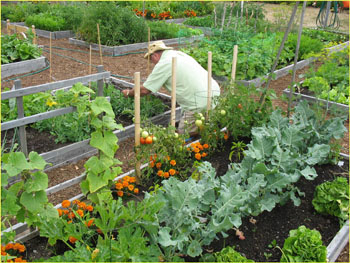
Community Gardening
A community garden is a place where people come together to grow veggies, herbs, fruits and often, flowers. No two gardens are alike. They are as distinct as the gardeners who work in them. Some offer individual raised planter boxes or beds and others garden communally for the benefit of all.
Benefits of Community Gardens
The Benefits of Community Gardening
- Allows people who have no outdoor space to add to their gardening skills and grow their own healthy, nutritious food
- Helps people to help themselves, thus instilling a sense of self-reliance
- Supports environmental and horticultural education programs by promoting recycling, conservation, and organic garden practices
- Promotes team work, cooperation and networking and allows for the integration of people of all ages, abilities, and incomes
- Provides a relaxing way to exercise and enjoy nature
- Revitalizes and beautifies existing urban neighbourhoods by converting vacant land into productive gardens
- Increases volunteerism, promotes civic pride, and reduces crime
A community garden doesn’t just happen. It takes hard work, commitment, and passion.
Are you up for the challenge?
How to Create a Community Garden
If your society wishes to act as the lead organization in the creation of a community garden or be part of a collaborative of like-minded organizations working together, there is a wealth of resources and guides available online to provide the necessary information for good planning.
Get Involved…
- Toronto Parks & Recreation offers a comprehensive Community Gardens Program Toolkit.
- Toronto Community Housing recently created a Community Gardening Resource Guide.
- A Community Gardener’s Guidebook covers the month to month tasks of community gardening.
- Check out the Community Garden Network on Sustain Ontario for the latest best practices, strategies and solutions to your questions related to community gardening.
- Accessibility issues often need to be addressed during the planning stages of setting up a garden; Check out Garden Forever to learn how other people manage to continue to garden with physical challenges and Building Elevated Beds.
- Why not consider setting aside some community garden beds to grow and share veggies with your local soup kitchen or food bank. Check out Plant a Row-Grow a Row (PARGAR) for more information.
WE Can Help!
Available OHA Grant: The OHA offers grants ($500 value) to horticultural societies to assist in the creation of new community gardens or the revitalization of established ones. Check out our Awards and Grants.
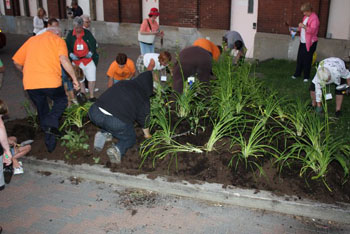
Guerrilla Gardening
Indulge in random acts of beauty by doing a spot of guerrilla gardening in your neighbourhood with a few fellow gardeners. Armed with surplus plants and seed balls, you can brighten up neglected, weed filled boulevards and waste areas in an hour or two.
Release your inner guerrilla!
Did you know?
- The Green Guerrillas of New York reclaimed waste fields in slum areas in the 1970s by throwing seed grenades (water balloons filled with seed) onto the ground which gave rise to the growth of community gardens in North America
- Elzeard Bouffier, a shepherd, planted thousands of trees, one acorn at a time, in Europe prior to the start of World War I. Check out The Story of Elzeard Bouffier
- Richard Reynolds, founder of the Guerrilla Gardeners in London, England communicates with fellow activists all over the world on his website guerillagardening.org
How to Organize a Guerrilla Gardening Activity
- This is the perfect intergenerational activity. Involve children, youth, families and seniors who want to make the world a better place
- Choose a site that is untended or unused. Never plant on private land or in public gardens or parks. Avoid messing around with native vegetation. If you want to plant edibles like lettuce, kale or cherry tomatoes, avoid planting near pollution sources like car exhaust. Think BIG but start small so you leave the land better than you found it.
- Plant in the late evening or very early morning so you are not conspicuous and get it done.
- Consider the soil conditions of your selected spot and choose plants that like dry conditions. Choose perennials, self-sowers, and native plants that are hardy in your area. Wear comfortable clothing and footwear and loosen the hard-packed earth with a trowel or spade, work in some compost, make a hole and plant. BE sure to remove any alien, invasive weeds. Water in plants well and mulch with leaves if you have them. Return later to water again, especially in the first week to get them established.
- Organize a backpack to hold your equipment and supplies. Include a folding shovel, trowel, pruners, hand cultivator, dibber, knee pads, work gloves and seeds. Toss compost-filled buckets, containers of water and surplus seedlings/plants into the trunk of a car.
- Expect some losses and keep a positive attitude. Replant if necessary. Consider a handmade sign with the message “Water Me” to encourage bystanders to assist in the care of the plants.
- Carry your horticultural society membership card for ID and sometimes bring a “Get out of Jail” Monopoly card if you plan to plant in a high-profile area.
Feeling Inspired?
- Consider holding a seed ball making session with youth club members at society/district meetings or at special events such as Seedy Saturdays. For instructions on how to make seed balls, go to Mother Nature Network (MNN)
- Learn how to create the eco-friendly moss graffiti to replace spray paint messages or images on a wall. Check out Inhabitat’s DIY: How to Make Your Own Green Moss Graffiti
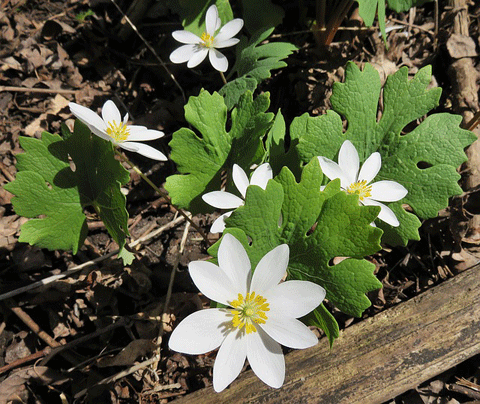
Indigenous First Nations Gardening
Gardening is very important in First Nations communities, especially those in Northern Ontario, where fresh produce is both costly and difficult to obtain.
Growing Food and Medicine Gardens
- promotes traditional growing and harvesting practices of Indigenous peoples;
- provides educational opportunities for the Elders and community members to learn about the cultural and spiritual importance of certain plants;
- provides hands-on experience and knowledge to community members growing their own food and medicines such as Sage and Tobacco which contributes to greater food security and resilience; and
- encourages intergenerational experiences for both youth and Elders.
Get Involved…
- Check out the Calgary Horticultural Society’s fact sheet: Aboriginal I First Nations Gardening.
- Read about how the Canadian Feed the Children (CFTC) partners with First Nations community in New Brunswick to establish vital school and community gardens that respect traditional practices while helping to address food insecurity issues. Go to the article “Gardens grow communities” for more information.
- MCC Ontario is working with nine First Nation communities located in Northern Ontario to raise funds to ship Community Gardening Kits. To learn how your Society can make a donation, go to Community Gardening Kits. Each kit supplies full size metal shovels, cultivators, gardening gloves, flower and vegetable seeds, seed potatoes and the cost of shipping.
- Learn more about The Four Sacred Plants of the Anishinaabek People to understand the spiritual importance of tobacco, cedar, sage, and sweet grass.
- One Acre Farm’s 12 Native Plants for Food and Medicines refers to those native plants for food and medicine that offer sustenance to both humans and wildlife.
- For those who favour traditional heirloom seed varieties, check out Mother Earth News’ article “Seed Varieties for Your Native American Garden”, offering an invaluable listing of bean, corn, and squash seed varieties that are available from seed companies.
- Many indigenous gardens utilized crop rotation and companion planting. Learn more about how to incorporate the Three Sisters Garden techniques by visiting Native Tech’s article “Planting a Three Sisters Garden” and William Woys Weaver’s “Native American Gardening: The Three Sisters and More”.
- View Wild Foods & Medicines website to learn more about foraging and harvesting techniques.
- Visit the Royal Botanical Gardens’ Indigenous Trail that focuses on the story of Anishinaabe plant connections.
Possible Sources of Funding:
- Canadian Feed the Children (CFTC) supports local food systems including school, home and community gardens and initiatives.
- Whole Kids Foundation provides monetary grants for schools (K-12) or a non-profit organization working in partnership with a school to support a new or existing edible garden on school grounds.
- Evergreen’s Seeds of Change Grant Program supports community gardens across Canada.
- Project Orange Thumb (Fiskars) funds a community garden grant program that provides tools and resources to help communities reach their goals for collaboration, neighbourhood beautification and healthy, sustainable food sources in Canada and the United States.
- Epicure Foundation Grant Program awards grants to community initiatives across Canada supporting food security.
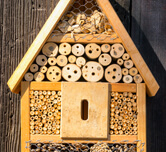
Pollinator Habitat (pollinator gardens and nesting sites)
The Ontario Horticultural Association (OHA) encourages gardeners across Ontario to improve pollinator health by planting pollinator-friendly gardens and/or by creating pollinator habitats and nesting sites.
Improving Habitats for Pollinators
- Provide a diverse variety of native plants, trees and shrubs that are indigenous to your area
- Plant for a succession of bloom throughout the growing season
- Aim to plant flower clumps at least 3’ in diameter whenever possible for greater impact
- Leave some bare ground, free of mulch, in sunny locations to provide habitat for some species
- Leave a small brush pile or dead wood in the form of logs and stumps on the site. Consider creating a wildlife stack and/or insect hotels to provide shelter
- Avoid the use of pesticides
OHA Publications
To find out more about how you can get involved in the OHA Pollinator Initiative, download our brochure.
Roadsides (a 2010 project of the OHA Conservation & Environment Committee), provides valuable information on how to create pollinator patches of native plants along roads and highways in Ontario.
Related OHA Trillium Newsletter articles
- ‘Creating a Pollinator Garden in Lakefield’, Winter 2017-2018
- ‘Telling the Bees’, Autumn 2017 p.8
- ‘Building a Mason Bee Hotel’, Summer 2017 p.19
Get Involved…
- Ontario Pollinator Health Action Plan provides information to those who wish to boost the presence of pollinators in their gardens and find out how they can contribute by checking out the Gardener Action Plan
- Seeds of Diversity Canada offers Pollination Canada resources on Pollinator Friendly gardening and a Name That Pollinator mini field guide. You can also purchase copies of the colourful 20-page booklet How to Make a Pollinator Garden by Clement F. Kent
- Pollination Guelph offers Bee Condo Maintenance Guidelines A very informative site!
- The Great Sunflower Project 2018 is the largest citizen science project focused on pollinators
- Monarch Butterfly Garden offers information on The Top Tools, Supplies and Resources for Raising Monarch Butterflies
- The mission of Bee City Canada is to inspire cities, towns, First Nations, schools, businesses and other organizations to take action to protect pollinators. They offer a wide variety of programs and resources
WE Can Help!
Available OHA Grant: Pollinator Project Grant ($ value). Check out our Awards and Grants.
Also, you can obtain an OHA Pollinator Haven sign by sending an email to treasurer@gardenontario.org and checkout the links on our Resource Page *Link to Pollinator Resources toward bottom of page
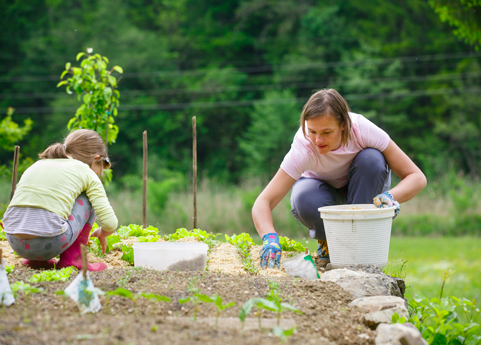
Special Projects
Special Projects must be sustainable in nature and provide a measurable benefit to the society or community. They require some planning and consideration.
5 Important Tips
Here are five important tips for organizing a successful project:
- Do your research and ask a lot of questions so you know what it involved. Contact community agencies and professionals for advice. Allow everyone involved a voice in the planning. Be sure to obtain all necessary permits in writing before starting.
- Set a reasonable budget. Consider cost sharing agreements with local businesses and in-kind donations from the community to stretch your monies.
- Choose good quality plants and accessories to fit a decided colour scheme for the beautification project. Keep good written records and be sure to take photographs to aid in planning and promotion for subsequent years.
- Provide volunteers with meaningful tasks and acknowledge their efforts. Consider recruiting interested volunteers from the John Howard Society, Volunteer Bureau, local high schools and Guide/Scout troops. Provide refreshments, gloves and well-maintained tools and equipment. Have a basic first aid kit and incident reports on hand in case of an emergency.
- Don’t forget to create a maintenance plan that includes weeding and watering and be prepared to make a commitment to maintain this project for years to come.
Get Involved…
- Create an AAS (All America Selections) Display Garden in a local park. This gives the whole community a chance to view and be educated about the new AAS selections. Check out https://all-americaselections.org for details.
WE Can Help!
Available OHA Grant: Special Project Grant ($500 value). Check out our Awards and Grants.
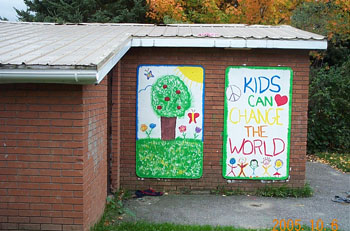
Youth Activities
The involvement of young people is crucial to furthering horticulture in Ontario. Just as we nurture our gardens and protect our natural areas, so too must we encourage the involvement of today’s youth in all areas of horticulture.
Shortly, Ontario will be theirs to care for. Our responsibility as an organization is to demonstrate to youth the value of horticulture to the province, the community, and the individual. Tending our responsibilities supports health and growth at all levels: the self, the garden, and the society as a whole.
Read the latest news:
15DEC21 – Winter Youth News
11JAN20 – 2020 New and improved
25AUG19 – Summer Youth News
Also see our Youth Resources for a selection of guides and forms.
How to Organize a Youth Program
Benefits of a Youth Program:
- foster pride in the community
- teach conservation measures
- teach gardening skills
- instill an awareness and concern for the environment
- promote involvement in a healthful and rewarding hobby
School Food Gardens
Benefits of a School Garden
- The growing of food to improve nutrition and health
- Beautification of an existing neighbourhood
- Provides habitat and food for birds and insects
- Cultivates environmental awareness
- Provides an outdoor classroom for nature study
- Instills a sense of self-reliance
- Encourages the integration of students of all ages, abilities and incomes
- Provides a relaxing way to exercise
- Fosters increased civic pride
Twelve Helpful Tips for Starting a Successful Youth Garden in Your Community
- Start small initially and build on your successes
- Write a garden plan early in the season. Determine who will participate, how long the garden will operate, the goals and objectives of the garden and what supplies and tools needed
- Enlist the support of the school principal, teachers, custodial staff, etc. and discuss how the garden will relate to the curriculum, the need for liability insurance, use of water system, storage for tools and supplies and access to the building. Set a budget
- Select a sunny location with a source of water nearby
- Plan special activities to kick off the garden program and enlist the support of family and neighbours
- Involve students in all aspects of the project. Decide what will be planted and whether seeds or transplants will be required
- Collaborate with horticultural society members, local farmers, growers and community gardens and arrange for the sharing of gardening knowledge and resources
- Obtain or borrow tools and supplies and the necessary liability insurance.
- Create the garden beds and plant, weed and water
- Celebrate your successes and learn from your mistakes
- Plan a Harvest Party to thank all involved
- Be sure to document your project in writing and through photos
Get Involved…
- TD’s Building Outdoor Classrooms: A guide for successful fundraising offers checklists, details of funding opportunities, planning templates and inspiring case studies as well as a wonderful resource list
- Check out the Ministry of Natural Resources Extension Notes—Planning a School Tree Plant
- The Green School Manual-School Composting provides comprehensive information on how to set up vermicomposting units or composting areas in schoolyard gardens
- Evergreen has produced The Learning Grounds Guide for Schools If your society is interested in being involved in habitat and naturalization projects, check out the School Ground Greening Evergreen offers a lot of advice on the issues of safety, vandalism, funding and project sustainability
- Check out Greater Sudbury’s Ugliest Schoolyard Contest.The winning school receives resources to regreen their schoolyard with the help of a landscape designer, Sudbury Master Gardeners, and the Sudbury Horticultural Society. An article “The Ugliest Schoolyard Regreening Project-2017” is posted in the OHA Trillium Winter 2017-18 issue on page 19.
- Looking for ways to create a healthy alternative to highly allergenic landscapes often found in most cities? Review “Building The “Asthma Friendly” Schoolyard Garden” written by Peter Prakke, Society for Allergy Friendly Environmental Gardening, in the Spring 2017 issue of the OHA Trillium on page 18.
Citizen Science Opportunities
- Nature-Watch offers a wide variety of nature activity craft kits for children and youth.
- For those looking to engage children and youth in citizen science projects, check out FrogWatch, PlantWatch, WormWatch and Milkweed Watch on the Nature-Watch site.
- Visit Nature Canada’s resource page on Monarch playgrounds-create a butterfly garden for instructions on how to create one.
- Participate in Cornell University’s ‘The Lost Ladybug Project’. This site provides information on how to locate and photograph ladybugs, ladybug identification tools and lots of teaching resources.
- Check out Dr. Jane Goodall’s Roots and Shoots program resources. They support youth as they explore their community, identify environmental problems and take action.
Youth Club Requirements
- A fee ($1 or more) per child, per year, is mandatory in order to remain in good standing with OHA. For insurance purposes all members must be in good standing.
- A list of paid up members is required. A copy must be held by the parent’s secretary.
- Children must be six years of age or older in order to be covered by OHA insurance, compete in OHA competitions, attend youth camps, etc.
- It is required that leaders and assistants have current vulnerable sector records checks performed in their community and be on record with the OHA youth committee chairperson. Leaders and assistants should check with their local police departments.
- Youth clubs may have elected officers, depending on the ages of members.
- A youth club should have a minimum of five children.
- Club size:
- A – 5 to 20 members
- B – 21 to 35 members
- C – 36 to 50 members
- D – 51 members and over
- A youth club should have a minimum of three meetings per year
- Club status:
- Occasional – 3 to 5 meetings per year
- Seasonal – 6 to 8 meetings per year
- Regular – 9 to 12 or more meetings per year
- Outreach programs may be run by the parent society members where required for a single or one-time project
- A report on the project should be sent to the Youth Chair by June 1st
How to Start A Youth Horticultural Club
Leadership plays a key role in the formation and success of any club. Numbers are not necessarily the most important factor. The first step is to find leaders. Leaders provide guidance and advice.
While many hesitate to offer their services as leaders of youth clubs, it is not necessary that they be trained or skilled in the arts of horticulture. With some gift of organization and leadership, and above all, a respect, love and understanding of children, the leader can call upon society members, florists, greenhouse operators and community gardeners to provide instruction on special topics. Many multi-media resources, books, and literature on horticulture are available from school and public libraries.
There will have to be an initial meeting to discuss possible programs and projects. Club objectives should be outlined and suggestions given as to how they should be carried out, i.e. number of meetings, length of time, when and where to hold the meetings. Participation of youth leaders and interested adult members in planning programs and meetings helps hold their interest as well as training leaders for the future. Later on, as the youth members become older and more experienced, they can advance to make good assistant leaders and help instruct younger members.
Horticultural societies have a definite responsibility to organize and support youth clubs. They should be an important source of leaders and instructors. Proper recognition of young people contributes greatly to their success. Adult horticultural members can also play an important role by providing necessary financial aid, providing Junior Gardener crests, prize ribbons, prize money, and special awards, program supplies, tools and handouts etc.
Resource people: Society members specialize in many areas of horticulture such as flower arranging, corsage making, fruit and vegetable presentation and display for competitions, house plants, roses, vegetable gardening, as well as knowledge of local greenhouse and/or nursery operators.
Assistant Leaders: Always try to have at least one or more assistant so that if anything happens to the leader they can carry on with the program, share the load, and support each other. Remember, always invite the parent of the child to stay and participate with their child at the meeting. This way the parent can help the child at home and can be a possible source for ideas and suggestions for the program as well as being a potential assistant or leader in the future.
The use of buttons, membership cards, and youth certificates add pride and incentive and may be provided by the society or awarded for merit. Making name badges is a good project for the initial meeting at which time an assistant leader could keep a record book of attendance and take photographs for a scrapbook. An outline of future events can be either planned with input from the children, or explained for the next meeting or the year at this time. However, the first meeting must involve an interesting, creative craft for the children if you want them to return. The start may be small, the program may be simple, even limited to the distribution of packages of seed, but the important thing is to GET STARTED!
Organizing Through Established Groups
Youth horticultural work can be effectively carried out through such groups as Girl Guides, Brownies, Boy Scouts, Cubs, and 4-H Clubs, who award badges for their work. Any young people’s organization can form the basis for horticultural promotion. Timely projects for them would be to help beautify the church grounds, or to plant flower beds and shrubs under the direction of an adult. Similarly, improvement of a cemetery is also a possibility, with badly neglected ones offering a special challenge. Other community facilities like school grounds and public parks may need upkeep and care.
Successful youth clubs have been formed in tenement sections of cities, or where children reside in apartments and planting is limited to a window box or urn. Trips to parks form an essential part of their education about plants, flowers, and conservation. The costly act of littering is a subject which can be stressed in talks and by the making of posters.
Children everywhere, in all walks of life, in all circumstances, await the interest and leadership of older people who feel challenged to share their knowledge and enjoyment of nature with others.
Example: Successful steps taken by one society: The leader of the organization was contacted, and arrangements were made to attend meetings to tell the children what was offered in addition to the opportunity to earn badges. With enthusiastic endorsement by the children and leaders, a note was sent to the parents, stating that the horticultural society, in cooperation with the organization’s leaders, would supply each member with four kinds of flower seeds, give instruction in planting and care, and demonstrate flower arranging. This work would be done at regular meetings, participants being considered youth members of the horticultural society and eligible to compete in spring and fall flower shows. It was requested that $1.00 be brought to the next meeting.
The promoter of the idea and assistants distributed seeds in early May (seeds were packaged by senior members) and gave instruction in planting. Each group was visited three weeks in succession and taught flower arranging.
Source: Ontario Horticultural Association Youth Leaders Manual 1998 pp, 2-4
WE Can Help!
Available OHA Grant: Youth Help Program Grant ($50 value every 2 years). Submit the Youth Club Grant Application Form to apply for funds towards programming, seeds, special events, supplies, etc. for your society’s youth club. Check out our Awards and Grants.
There is a section in the OHA Trillium for youth news. The OHA has competitions for youth members at its convention each year.
Also see our Youth Resources for a selection of guides and forms.

